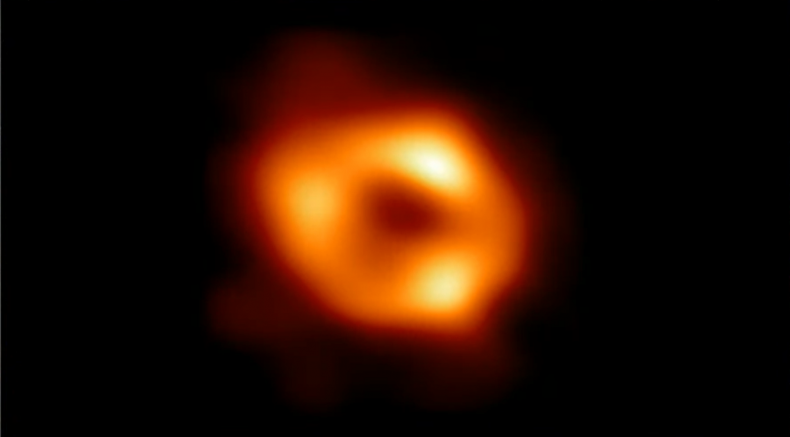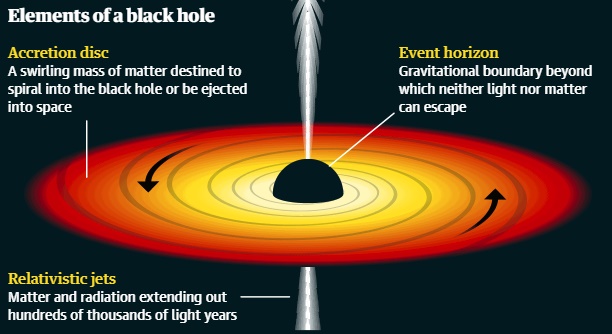Context:
The first photograph of Sagittarius A* (pronounced as sadge-ay-star), a supermassive black hole about 26,000 light years from Earth and situated at the centre of the Milky Way, was revealed by astronomers of the Event Horizon Telescope (EHT).
- In April 2019, astronomers captured the first ever photograph of a black hole M87, which was located in a distant galaxy called Messier 87.

Relevance:
GS II- Science and Technology
Dimensions of the Article:
- About black hole
- Where do black holes come from?
About black hole
A black hole is a place in space where gravity pulls so much that even light cannot get out. The gravity is so strong because matter has been squeezed into a tiny space, this can happen when a star is dying.
Black holes are of four types, classified on the basis of their mass –
- Stellar mass black holes,
- Mid- size black holes ,
- Super Massive black holes
- Miniature black holes.
A black hole has two basic parts:
- The Singularity: It is at the centre and is where the mass resides.
- Event Horizon: There is a region of space beyond the black hole called the event horizon. This is a “point of no return”, beyond which it is impossible to escape the gravitational effects of the black hole.

Where do black holes come from?
- A black hole is formed when stars collapse, leading to a space in the universe with an escape velocity — the speed at which an object must travel to override a planet or an object’s gravitational force.
- For instance, for a spacecraft to leave the surface of the Earth, it needs to be travelling at a speed of about 40,000 km per hour which is so great that even light cannot escape it.
- Because light cannot get out, black holes are invisible and can only be tracked with the help of spatial telescopes and special tools.
- The light cannot go out because the gravity inside a black hole is very strong as a result of a lot of matter being squeezed into a small space.
- In 2020, the Royal Swedish Academy of Sciences decided to award one half of the year’s Nobel Prize in physics to Roger Penrose and the other half jointly to Reinhard Genzel and Andrea Ghez for furthering the understanding of black holes, the most “enigmatic” objects in the universe.
-Source: Indian Express





